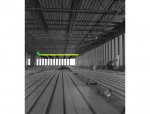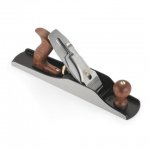No... I am not aware of your explanation for the 7wtc collapse. Perhaps you could link to it.
keep in mind that these were produced 6 years ago and obviously the argument has been developed since. This is the 4th video we did and probably the best summary. The narration is a little easier on the ears than my accent also !
YouTube
I suspect the facade failure in 1 wtc was likely not caused by load redistribution as the main driver. There may have been some.
There has to have been some yes.
My hunch is that the floor plates pulled at the facade when their inside support at the core failed. Not sure how they failed... the pipes, the belt girder... the stub outs supporting the belt girder. I doubt it was failures (buckling) of the perimeter core columns... though this is possible if they saw too much redistributed loading.
That's kind of what I said above. We know the floor moved because the bowing was observed, and perhaps the belt girder around the core failed, or flexed somewhat with the distortion of the floor. The construction joints in the floor were also very susceptible to shear which may have aided progression.
As you may know I believe the structural integrity of the core was being "hollowed out" over time. This could lead to the dropping of the antenna... the overloading of the perimeter columns of the core. Without the bracing the core lost its stiffness and was more subject to buckling.
The core may have been in tension due to thermal expansion especially in the bracing, and if the belt girder failed that tension would be relieved at the corner around cores 1001-1002 just outside the footprint of the main hat truss above.
I also believe that at some "point of no return" the failure rapidly spread and floor plates plunged pulling at the facade. But I don't understand the lateral movement of all the facades.
With the North face, it would be natural for any core failure to spread initially to the one way zone, which the footprint of the hat truss more or less aligns with on the long span faces. This would push toward the corners from the centre, where the antenna load is concentrated as we saw in the D/C ratio for the upper perimeters at the centre of the long span face.
Could the plunging core side of the OOS slabs pull such that the gross movement of the top block was in a single direction?
Not initially no, but once a failure had begun to progress, by whatever means, the failure would redistribute in the same way as any other tolerable overstress would have been balanced in the structural system.
Or did it mean loss of lateral support and then the facade buckled more than it was driven by displacement?
I believe there still has to be a misalignment in the core (as I think you've mentioned yourself in the past) It may be that the core corners were vulnerable to damage from a floor failure that extended to the belt truss
.
The release moment is too complex for me to wrap my mind around at this point.
It's certainly difficult to imagine how fire can do it, even with the damage accounted for. But I think the way to analyse it is not to start with a preconception of the cause being fire/damage or CD, but to look at the failure and try to better understand it by attributing whatever individual areas of failure become apparent to just failure, rather than a cause at this stage.
Certainly the NIST hypothesis can, at this point be disregarded.
ADD The videos were actually produced about 7-8 years ago. These were reuploads. Time flies when you're having fun eh!


